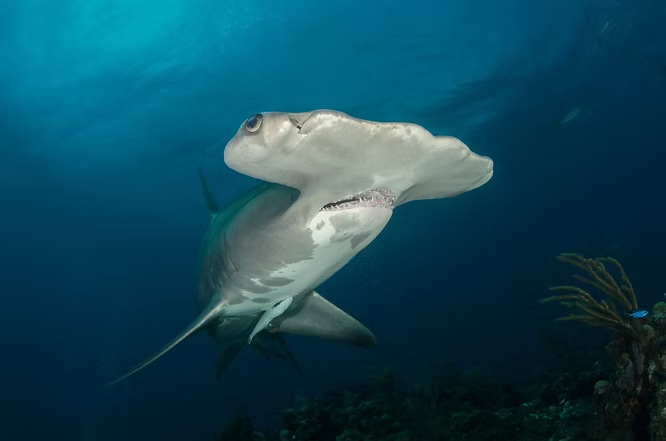The Great Hammerhead Shark: Apex Predator at Risk
The great hammerhead shark is the largest of all hammerhead species, reaching lengths of up to 20 feet (6.1 meters) and weighing nearly 1,000 pounds (450 kilograms). It can be identified by its distinctive, nearly straight hammer-shaped head (called a cephalofoil) with a deep notch in the center, setting it apart from other hammerhead sharks.
Habitat and Behavior
These sharks are apex predators, found in warm coastal waters worldwide where temperatures are above 68°F (20°C). Unlike the scalloped hammerhead, the great hammerhead is a solitary traveler, capable of migrating more than 750 miles (1,200 km) on its own. This species also grows faster and reaches maturity earlier than its relatives, between the ages of 5 and 9 years.
Reproduction and Lifespan
Great hammerheads reproduce via internal fertilization and give birth to live young every two years. A single litter can range from 6 to as many as 42 pups. If not threatened by predators or human activity, individuals may live up to 44 years, and possibly longer.
Feeding and Hunting Adaptations
With long, serrated teeth and highly specialized heads, great hammerheads are skilled hunters. Their cephalofoils are lined with sensory organs that detect electric signals from hidden prey, even beneath sand. They primarily hunt along the seafloor, feeding on stingrays, cephalopods like squid and octopus, crustaceans, and even smaller sharks. They have been observed pinning stingrays to the seafloor with the sides of their heads before feeding. Despite their size, they do not target prey larger than stingrays, and adult great hammerheads themselves have no natural predators.
Threats and Conservation Status
While secure in their role as top predators, great hammerhead sharks face a significant threat from humans. They are often caught both intentionally and as bycatch in longline, trawl, gillnet, and hook-and-line fisheries. Their large fins are especially prized in the international shark fin trade, making them a target for overfishing. Tragically, more than 90% of captured great hammerheads die, even if they are not directly targeted. Combined with their coastal habitat and high fin value, this vulnerability has led to their classification as endangered.
The Importance of Protection
As apex predators, great hammerhead sharks play a vital role in maintaining the balance of marine ecosystems by regulating prey populations. Their decline threatens to destabilize food webs and diminish biodiversity. Conservation efforts, including stricter fishing regulations and global action against the shark fin trade, are crucial to ensuring that these remarkable predators do not vanish from our oceans.

